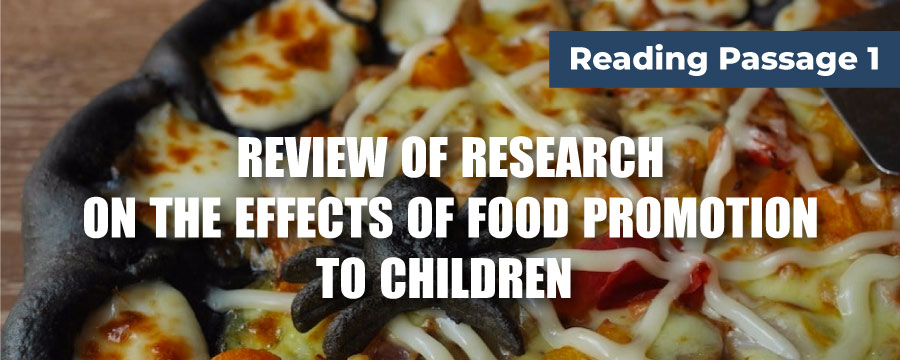
IELTS Recent Mock Tests Volume 3
- Published on: 31 Jan 2018
- Tests taken: 1,171,849
Answer Keys:
Part 1: Question 1 - 13
- 1 viii
- 2 ii
- 3 vi
- 4 v
- 5 i
- 6 x
- 7 iii
- 8 NO
- 9 NO
- 10 YES
- 11 NOT GIVEN
- 12 NOT GIVEN
- 13 YES
- 1 viii
- 2 ii
- 3 vi
- 4 v
- 5 i
- 6 x
- 7 iii
- 8 NO
- 9 NO
- 10 YES
- 11 NOT GIVEN
- 12 NOT GIVEN
- 13 YES
Part 2: Question 17 - 26
- 14 17 B,D,E,H
- 18 wind(s)
- 19 swaying
- 20 further apart
- 21 footsteps
- 22 horizontal forces
- 23 upright
- 24 (Engineer designer) Arup
- 25 Imperial College
- 26 University of Southampton
- 14 17 B,D,E,H
- 18 wind(s)
- 19 swaying
- 20 further apart
- 21 footsteps
- 22 horizontal forces
- 23 upright
- 24 (Engineer designer) Arup
- 25 Imperial College
- 26 University of Southampton
Part 3: Question 27 - 40
- 27 C
- 28 C
- 29 D
- 30 A
- 31 E
- 32 B
- 33 YES
- 34 YES
- 35 NO
- 36 NO
- 37 NOT GIVEN
- 38 NO
- 39 NOT GIVEN
- 40 YES
- 27 C
- 28 C
- 29 D
- 30 A
- 31 E
- 32 B
- 33 YES
- 34 YES
- 35 NO
- 36 NO
- 37 NOT GIVEN
- 38 NO
- 39 NOT GIVEN
- 40 YES
Leaderboard:
| # | User | Score | Time | |
|---|---|---|---|---|
| ( Hacker ) |  | 9.0 | 15:16 | |
| Khang Phan |  | 9.0 | 15:42 | |
| Văn Minh Đỗ |  | 9.0 | 15:51 | |
| 4 | Gulniso Turobova |  | 9.0 | 16:13 |
| 5 | Ekaterina Soboleva |  | 9.0 | 16:26 |
| 6 | Amandeep Kaur |  | 9.0 | 16:33 |
| 7 | Rossetta Jacobs |  | 9.0 | 16:59 |
| 8 | Son bach vu |  | 9.0 | 17:07 |
| 9 | Diego Perex |  | 9.0 | 17:24 |
| 10 | Nguyễn Thị Quỳnh Điệp |  | 9.0 | 17:34 |
Review & Explanations:
Questions 1-7
Reading Passage 1 has seven paragraphs, A-G.
Choose the most suitable heading for paragraphs A-G from the list of headings below. Write the ppropriate number, i-x, in boxes 1-7 on your answer sheet.
| List of Headings | |
| i | General points of agreements and disagreements of researchers |
| ii | How much children really know about food |
| iii | Need to take action |
| iv | Advertising effects of the “Big Four” |
| v | Connection of advertising and children’s weight problems |
| vi | Evidence that advertising affects what children buy to eat |
| vii | How parents influence children’s eating habits |
| viii | Advertising’s focus on unhealthy options |
| ix | Children often buy what they want |
| x | Underestimating the effects advertising has on children |
1 Paragraph A
2 paragraph B
3 Paragraph C
4 Paragraph D
5 Paragraph E
6 Paragraph F
7 Paragraph G
- 1 Answer: viii
Questions 1-7: Matching headings
Keywords in Questions/Answers
Similar words in Passage
viii. Advertising’s focus on unhealthy options
The advertised diet contrasts sharply with that recommended by public health advisors, and themes of fun and fantasy or taste, rather than health and nutrition, are used to promote it to children.
Note: the word “unhealthy” is paraphrased by using contrast expression “contrasts sharply with”.
For that reason, the answer is viii. Advertising’s focus on unhealthy options
- 2 Answer: ii
Keywords in Questions/Answers
Similar words in Passage
ii. How much children really know about food
The review tackled it by looking at studies that had examined possible effects on what children know about food, their food preferences, their actual food behaviour (both buying and eating), and their health outcomes (eg. obesity or cholesterol levels).
Note: The paragraph establishes several points around the degree which children are affected by food promotion, or how well they know about food.
Therefore, the answer is ii. How much children really know about food
- 3 Answer: vi
Keywords in Questions/Answers
Similar words in Passage
vi. Evidence that advertising affects what children buy to eat
The review also found evidence that food promotion influences children’s food preferences and their purchase behaviour.
Note: The first sentence of paragraph C clearly states the main idea. The following sentences introduce several studies as examples of how advertising affects children’s food purchase decisions.
For that reason, the answer is vi. Evidence that advertising affects what children buy to eat
- 4 Answer: v
Keywords in Questions/Answers
Similar words in Passage
v. Connection of advertising and children’s weight problems
The next step, of trying to establish whether or not a link exists between food promotion and diet or obesity, is extremely difficult as it requires research to be done in real world settings. A number of studies have attempted this by using amount of television viewing as a proxy for exposure to television advertising. They have established a clear link between television viewing and diet, obesity, and cholesterol levels
Note: The paragraph discusses problems surrounding establishing a defined relation between food promotion and children’s weight problems such as obesity or cholesterol levels.
For that reason, the answer is v. Connection of advertising and children’s weight problems
- 5 Answer: i
Keywords in Questions/Answers
Similar words in Passage
i. General points of agreements and disagreements of researchers
This does not amount to proof; as noted above with this kind of research, incontrovertible proof simply isn’t attainable. Nor do all studies point to this conclusion; several have not found an effect.
Nonetheless, many studies have found clear effects and they have used sophisticated methodologies that make it possible to determine that …
Note: The first 4 sentences of paragraph E state that the causal relation between food promotion and children’s food choices is not reachable because there is no undebatable proof. This describes the disagreements in advertisement’s impacts on children’s food choices among researches. Meanwhile, the remaining sentences of the paragraph presents three points on which all researchers agree.
For that reason, the answer is i. General points of agreements and disagreements of researchers
- 6 Answer: x
Keywords in Questions/Answers
Similar words in Passage
x. Underestimating the effects advertising has on children
Furthermore, two factors suggest that these findings actually downplay the effect that food promotion has on children.
Note: The word “underestimating” is paraphrased by using its synonym “downplay”
For that reason, the answer is x. Underestimating the effects advertising has on children
- 7 Answer: iii
Keywords in Questions/Answers
Similar words in Passage
iii. Need to take action
The debate should now shift to what action is needed, and specifically to how the power of commercial marketing can be used to bring about improvements in young people’s eating.
Note: The heading is repeated in the text.
For that reason, the answer is iii. Need to take action
Questions 8-13
Do the following statements agree with the views of the writer in Reading Passage 1?
In boxes 8-13 on your answer sheet, write
| YES | if the statement agrees with the views of the writer |
| NO | if the statement contradicts the views of the writer |
| NOT GIVEN | if it is impossible to say what the writer thinks about this |
8 There is little difference between the number of healthy food advertisements and the number of unhealthy food advertisements.
9 TV advertising has successfully taught children nutritional knowledge about vitamins and others.
10 It is hard to decide which aspect of TV viewing has caused weight problems of children.
11 The preference of food for children is affected by their age and gender.
12 Wealthy parents tend to buy more “sensible food” for their children.
13 There is a lack of investigation on food promotion methods other than TV advertising.
- 8 Answer: NO
Questions 8-13: YES/NO/NOT GIVEN
Keywords in Questions/Answers
Similar words in Passage
8. There is little difference between the number of healthy food advertisements and the number of unhealthy food advertisements.
The advertised diet contrasts sharply with that recommended by public health advisors, and themes of fun and fantasy or taste, rather than health and nutrition, are used to promote it to children. Meanwhile, the recommended diet gets little promotional support.
Note: As can be seen from the text, the healthy or recommended diet “gets little promotional support”, meaning the number of healthy food advertisements is clearly overwhelmed by that of unhealthy food.
For that reason, the answer is NO
- 9 Answer: NO
Keywords in Questions/Answers
Similar words in Passage
9. TV advertising has successfully taught children nutritional knowledge about vitamins and others
In terms of nutritional knowledge, food advertising seems to have little influence on children’s general perceptions of what constitutes a healthy diet, but, in certain contexts, it does have an effect on more specific types of nutritional knowledge. For example, seeing soft drink and cereal adverts reduced primary aged children’s ability to determine correctly whether or not certain products contained real fruit.
Note: The two sentences in paragraph B clearly state the opposite opinion to the statement in question.
For that reason, the answer is NO
- 10 Answer: YES
Keywords in Questions/Answers
Similar words in Passage
10. It is hard to decide which aspect of TV viewing has caused weight problems of children.
It is impossible to say, however, whether this effect is caused by the advertising, the sedentary nature of television viewing or snacking that might take place whilst viewing
Note: The information can be found in paragraph D, where the author is discussing the link between TV viewing and children’s weight problems. The author lists several other aspects of TV viewing which can confuse or subtly affect the result of research on this topic (“sedentary nature of television viewing”, “snacking”)
For that reason, the answer is YES.
- 11 Answer: NOT GIVEN
Keywords in Questions/Answers
11. The preference of food for children is affected by their age and gender.
Note: There is no mention of age and gender or the impacts of these elements on children’s diet in this entire passage. The only concern is the link between food promotion and children’s food preferences.
For that reason, the answer is NOT GIVEN.
- 12 Answer: NOT GIVEN
Keywords in Questions/Answers
Similar words in Passage
12. Wealthy parents tend to buy more “sensible food” for their children.
For example, promotion for fast food outlets may not only influence the child, but also encourage parents to take them for meals and reinforce the idea that this is a normal and desirable behaviour.
Note: The words “parents” can only be found in the last sentence of paragraph F. However, the author only uses a general noun “parents”, while not mentioning anything about their financial status.
For that reason, the answer is NOT GIVEN
- 13 Answer: YES
Keywords in Questions/Answers
Similar words in Passage
13. There is a lack of investigation on food promotion methods other than TV advertising.
The literature focuses principally on television advertising; the cumulative effect of this combined with other forms of promotion and marketing is likely to be significantly greater
Note: By stating there might be underlying effects of other forms of promotion methods, the author is suggesting that the research itself is incomplete or insufficient to produce a justified conclusion.
For that reason, the answer is YES
READING PASSAGE 1
You should spend about 20 minutes on Questions 1-13, which are based on Reading Passage 1 on the following pages.

REVIEW OF RESEARCH ON THE EFFECTS OF FOOD PROMOTION TO CHILDREN
This review was commissioned by the Food Standards Agency to examine the current research evidence on:
• the extent and nature of food promotion to children
• the effect, if any, that this promotion has on their food knowledge, preferences and behaviour.
A Children’s food promotion is dominated by television advertising, and the great majority of this promotes the so-called ‘Big Four’ of pre-sugared breakfast cereals, soft-drinks, confectionary and savoury snacks. In the last ten years advertising for fast food outlets has rapidly increased. There is some evidence that the dominance of television has recently begun to wane. The importance of strong, global branding reinforces a need for multi-faceted communications combining television with merchandising, ‘tie-ins’ and point of sale activity. The advertised diet contrasts sharply with that recommended by public health advisors, and themes of fun and fantasy or taste, rather than health and nutrition, are used to promote it to children. Meanwhile, the recommended diet gets little promotional support.
B There is plenty of evidence that children notice and enjoy food promotion. However, establishing whether this actually influences them is a complex problem. The review tackled it by looking at studies that had examined possible effects on what children know about food, their food preferences, their actual food behaviour (both buying and eating), and their health outcomes (eg. obesity or cholesterol levels). The majority of studies examined food advertising, but a few examined other forms of food promotion. In terms of nutritional knowledge, food advertising seems to have little influence on children’s general perceptions of what constitutes a healthy diet, but, in certain contexts, it does have an effect on more specific types of nutritional knowledge. For example, seeing soft drink and cereal adverts reduced primary aged children’s ability to determine correctly whether or not certain products contained real fruit.
C The review also found evidence that food promotion influences children’s food preferences and their purchase behaviour. A study of primary school children, for instance, found that exposure to advertising influenced which foods they claimed to like; and another showed that labelling and signage on a vending machine had an effect on what was bought by secondary school pupils. A number of studies have also shown that food advertising can influence what children eat. One, for example, showed that advertising influenced a primary class’s choice of daily snack at playtime.
D The next step, of trying to establish whether or not a link exists between food promotion and diet or obesity, is extremely difficult as it requires research to be done in real world settings. A number of studies have attempted this by using amount of television viewing as a proxy for exposure to television advertising. They have established a clear link between television viewing and diet, obesity, and cholesterol levels. It is impossible to say, however, whether this effect is caused by the advertising, the sedentary nature of television viewing or snacking that might take place whilst viewing. One study resolved this problem by taking a detailed diary of children’s viewing habits. This showed that the more food adverts they saw, the more snacks and calories they consumed.
E Thus the literature does suggest food promotion is influencing children’s diet in a number of ways. This does not amount to proof; as noted above with this kind of research, incontrovertible proof simply isn’t attainable. Nor do all studies point to this conclusion; several have not found an effect. In addition, very few studies have attempted to measure how strong these effects are relative to other factors influencing children’s food choices. Nonetheless, many studies have found clear effects and they have used sophisticated methodologies that make it possible to determine that i) these effects are not just due to chance; ii) they are independent of other factors that may influence diet, such as parents’ eating habits or attitudes; and iii) they occur at a brand and category level.
F Furthermore, two factors suggest that these findings actually downplay the effect that food promotion has on children. First, the literature focuses principally on television advertising; the cumulative effect of this combined with other forms of promotion and marketing is likely to be significantly greater. Second, the studies have looked at direct effects on individual children, and understate indirect influences. For example, promotion for fast food outlets may not only influence the child, but also encourage parents to take them for meals and reinforce the idea that this is a normal and desirable behaviour.
G This does not amount to proof of an effect, but in our view does provide sufficient evidence to conclude that an effect exists. The debate should now shift to what action is needed, and specifically to how the power of commercial marketing can be used to bring about improvements in young people’s eating.






